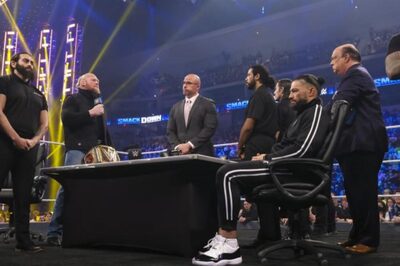
views
In theory, you could make an X-Files episode on many motorcycles. They are for the most part, mysterious. And of the lot, the Royal Enfield single would either be the season opener, or the finale. Allow me to explain.
If you were to make a list of the best handling, best ride quality, best quality, best performance or greatest value for money motorcycles in India, the chances of Royal Enfields topping any of these lists is slimmer than Kate Moss on a starvation diet. But look at what is going on. The Classic is sold out. Waiting periods are nearing ten to twelve months and we get emails, facebook messages and tweets every day almost from people saying they would have bought one if the waiting period was more reasonable.
And in this sense of mystery, the Royal Enfield has always been exceptional. After I rode a Thunderbird and an LB500 from Delhi to Leh and back, I understood what the aura was about and also grasped that it didn’t really float my boat. Sort of how a sports bike fan would understand why Harleys are so revered by cruiser lovers, without going over to the dark side, as it were.
But in ten years, meetings with the top company officials have always been slightly underwhelming, apart from my first nearly forty-five minute freewheeling chat with Siddartha Lal at the launch of the Thunderbird. It’s always been the same. How about overhead camshafts? Not our heritage. Seriously? No budgets either. How about an all-new bike? The current platforms are fine. Seriously? No budgets. Why didn’t you alter the frame for the T’bird for a proper cruiser look? Why mess with what’s not broken... And so forth.
But things are changing. In the past few years, RE has sharpened their image, quality levels have steadily improved, and their products have become more devoted to the brand’s image rather than the mess of weird stickering and stuff that we saw for a short while until RL Ravichandran, the then CEO, put a stop to that. Progress has been more ponderous than dazzling, but it’s all moving forward. What I’m still cut up about is that RE seems to go and launch all the coolest bikes, offer the newest upgrades to their customers abroad first. That’s not cool. Especially given that for all the hype exports are a measly single digit percentage contributor to their revenue.
But this time, it was different. The mood amongst the senior RE management at the launch was positive and upbeat. Expansion plans were thick on the ground and I immediately took to the sand-off-road-military appeal of the Desert Storm. The other variant, the Classic Chrome, a sort of Machismo meets Classic 500, on the other hand I figured would thrill retro-lovers but wasn’t quite as cool.
Now you know that we tend to look down on cosmetic variants and let me clarify that while these are hardly all-new motorcycles, they aren’t pure cosmetics. Royal Enfield has, for the first time in my memory, made significant changes to the chassis. The fork offset has been removed and the front forks are now directly mounted to the axle rather than behind them. This is a significant reduction in trail which should make the Enfield a more agile motorcycle. Then the swingarm is a bit longer, says Enfield. What remains the same is the Unit Construction Engine which features only some tweaks to the fuel injection system though the power and torque figures thump on changed at 27.1PS and 41.3Nm.
On our first ride in Jaisalmer, the changes didn’t make any palpable difference from the feel of the Classic 500. But once we put more miles on familiar roads back home, a few things became clear.
The Desert Storm feels like you sit a lot taller than before and sort of like you’re on top of the motorcycle. This gives you a towering feel, but then at the same time you wish the riders’s perch would have been a bit longer. This becomes even more prominent when the throttle is cracked open, as you tend to slide back off the seat. In the corners the difference in handling is marginal and I suspect the 19-inch front wheel is part of the reason why the motorcycle continues to feel heavy on its feet though it remains remarkably stable in corners as usual. The suspension is still not as supple as you would like using the weight to smother roads far more than actually absorbing the imperfections. In traffic too, the bike feels slightly better than the previous generation as the front end feels a bit sharper, but overall feel is still heavy. On the highways, feel is pretty much the same, and the Classic is happy to cruise at 90-100kmph. But cross the 100kmph mark, and the bike vibrates a bit, and is best kept below the ton. Talking of numbers, the Desert Storm accelerates to 60kmph from standstill in 4.99 seconds. 100kmph comes up in 14.1 seconds, and top speed achieved on the Desert Storm was 116kmph.
But the appeal is strong. Enfield fans will like these bikes and finish levels are distinctly better than before, though more improvements are required, and being worked on as we speak. Royal Enfield has priced the Desert Storm at Rs. 1.58 lakh (on-road Mumbai) which is Rs. 3,000 more than the Classic 500. The Classic Chrome is another Rs. 7,000 extra with a price tag of Rs. 1.68 lakh (on-road, Mumbai).



















Comments
0 comment